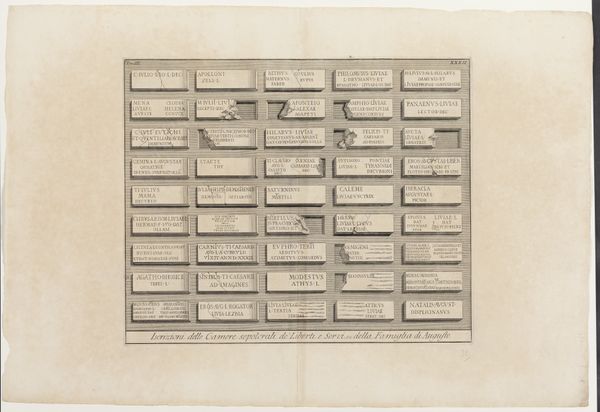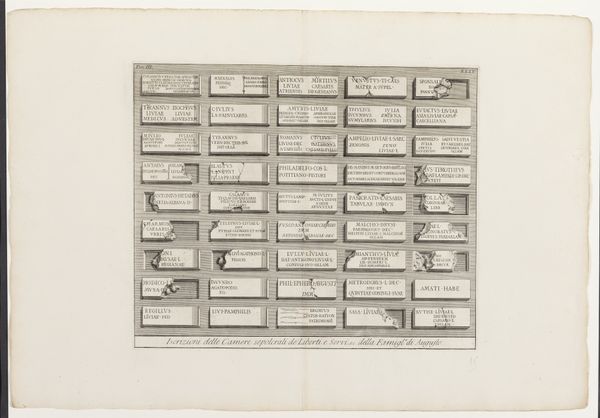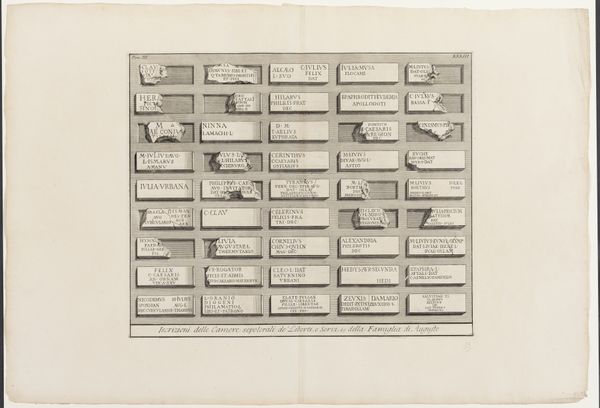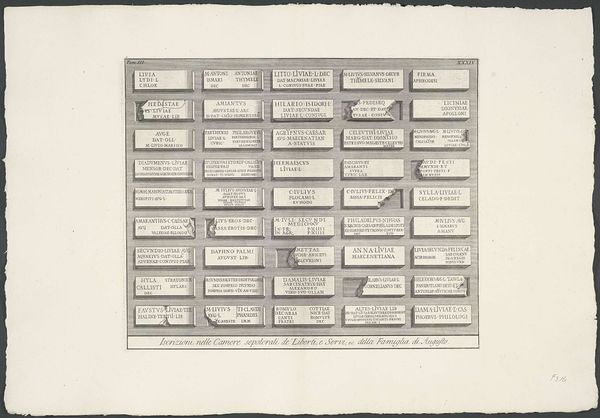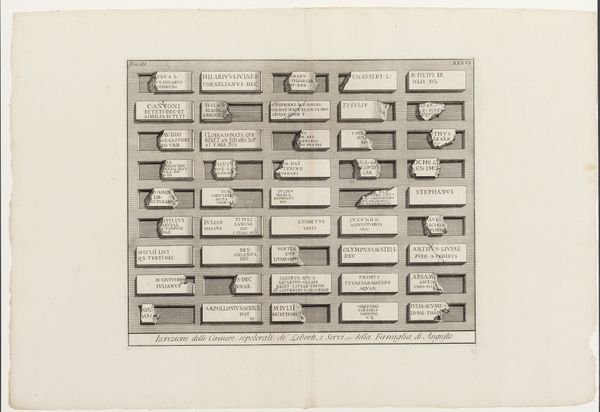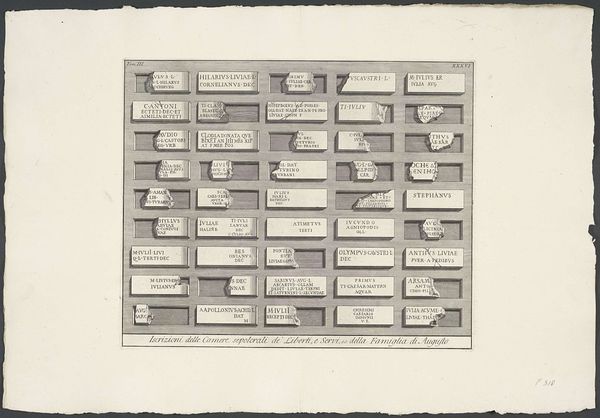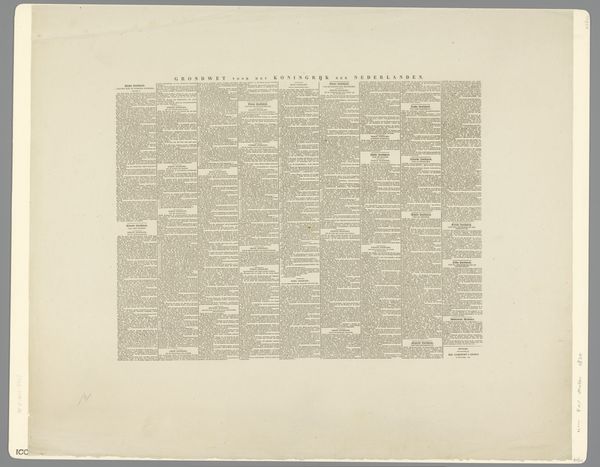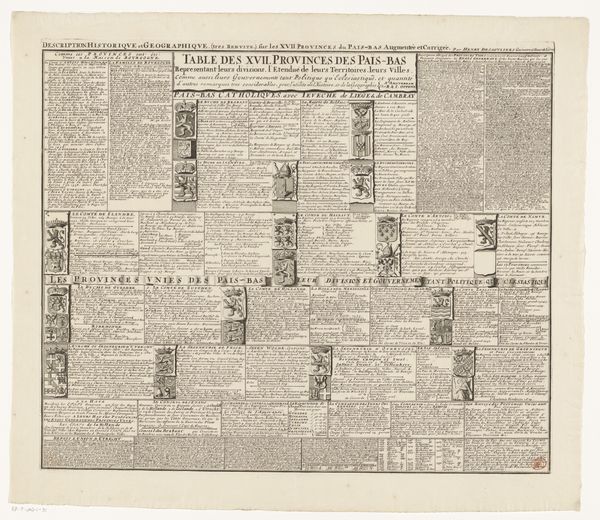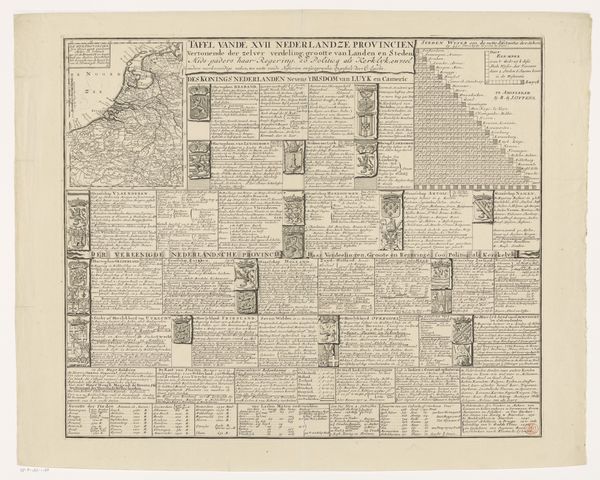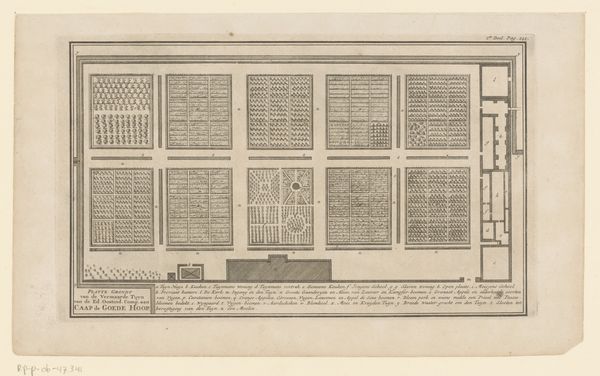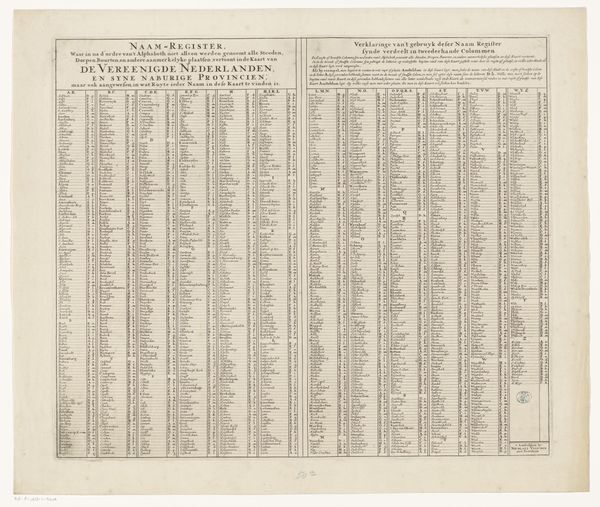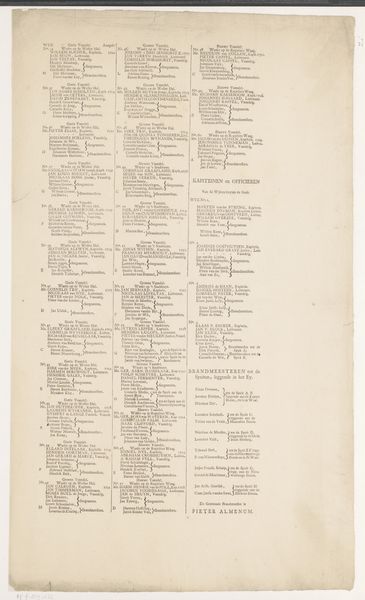
Iscrizioni delle Camere sepolcrali de' Liberti e Servi, ec. della Famiglia di Augusto, XXXVII 1756 - 1785
0:00
0:00
drawing, print, etching, paper, engraving
#
drawing
# print
#
etching
#
paper
#
romanesque
#
ancient-mediterranean
#
history-painting
#
engraving
Dimensions: 377 mm (height) x 485 mm (width) (bladmaal)
Curator: What strikes me immediately about this print, "Iscrizioni delle Camere sepolcrali de' Liberti e Servi, ec. della Famiglia di Augusto, XXXVII" by Giovanni Battista Piranesi, is how it attempts to meticulously categorize and document a collection of inscriptions. Editor: Yes, an almost archaeological feel. Though visually presented as a neat, orderly grid, the palpable sense of decay and fragment is overwhelming. It's a poignant, if clinical, depiction of history's ephemerality, using paper and ink. Curator: Piranesi, active in the 18th century, used etching and engraving techniques to craft this piece. We see the remnants of Roman history—inscriptions from tombs related to the family of Augustus. Think about the labor involved in reproducing these artifacts with such precision, effectively creating copies of copies, impacting notions of artistic authenticity. Editor: Absolutely. Consider, too, that these weren't just any Romans; they were freedmen and servants within Augustus's circle. Piranesi's work provides a glimpse into a less celebrated stratum of society in antiquity, humanizing the subjects memorialized, though fragmentarily. He's inviting a different readership to contemplate this socio-political reality through art. Curator: He masterfully combines meticulous representation with artistic interpretation. Some stones seem more 'whole' than others - highlighting what details Piranesi CHOSE to include, the specific kind of ink he was able to access. These decisions give the artist much power over our consumption. Editor: He wasn't merely archiving. His embellishments and dramatic flair subtly alter our perception, presenting these fragments within a powerful Roman Revivalist framework. Consider the role of printmaking itself at that moment, democratizing access to these "discoveries" from a dig to a much wider audience via mass consumption of artwork like these. Curator: Interesting thoughts; it prompts us to reconsider the boundaries between archaeology, artistry, and accessibility of history itself! Editor: Precisely. Piranesi has, ultimately, made us rethink the ways power affects and is consumed by its society.
Comments
No comments
Be the first to comment and join the conversation on the ultimate creative platform.
